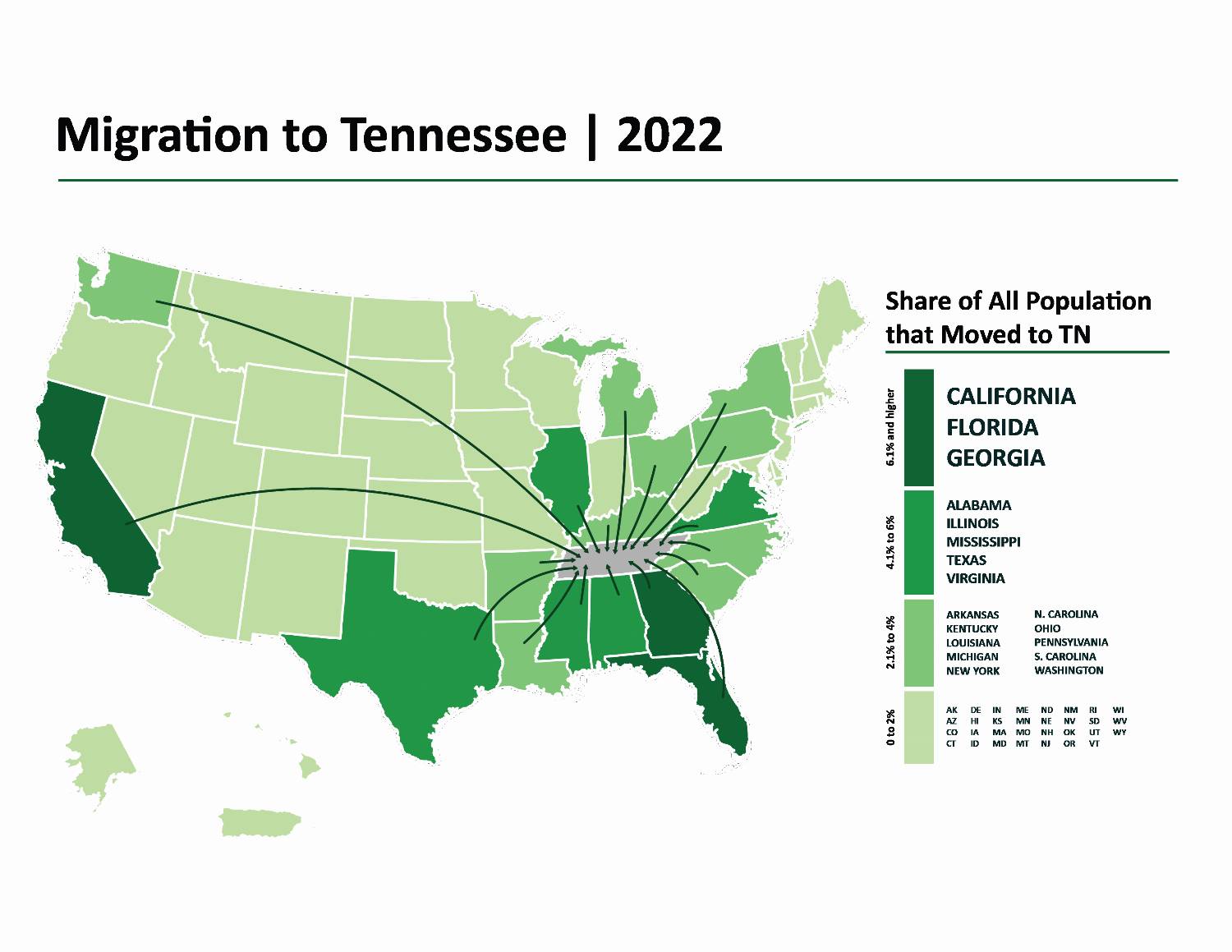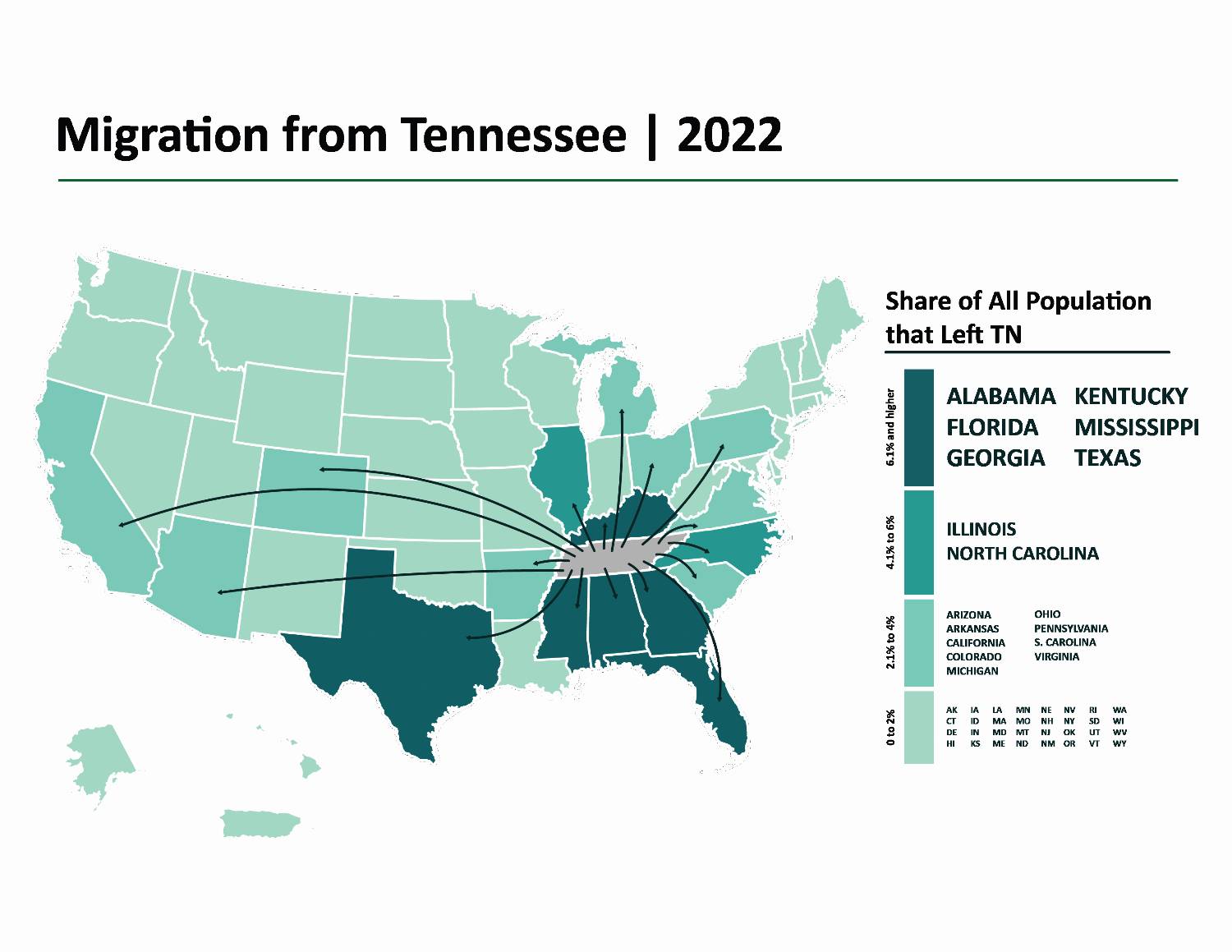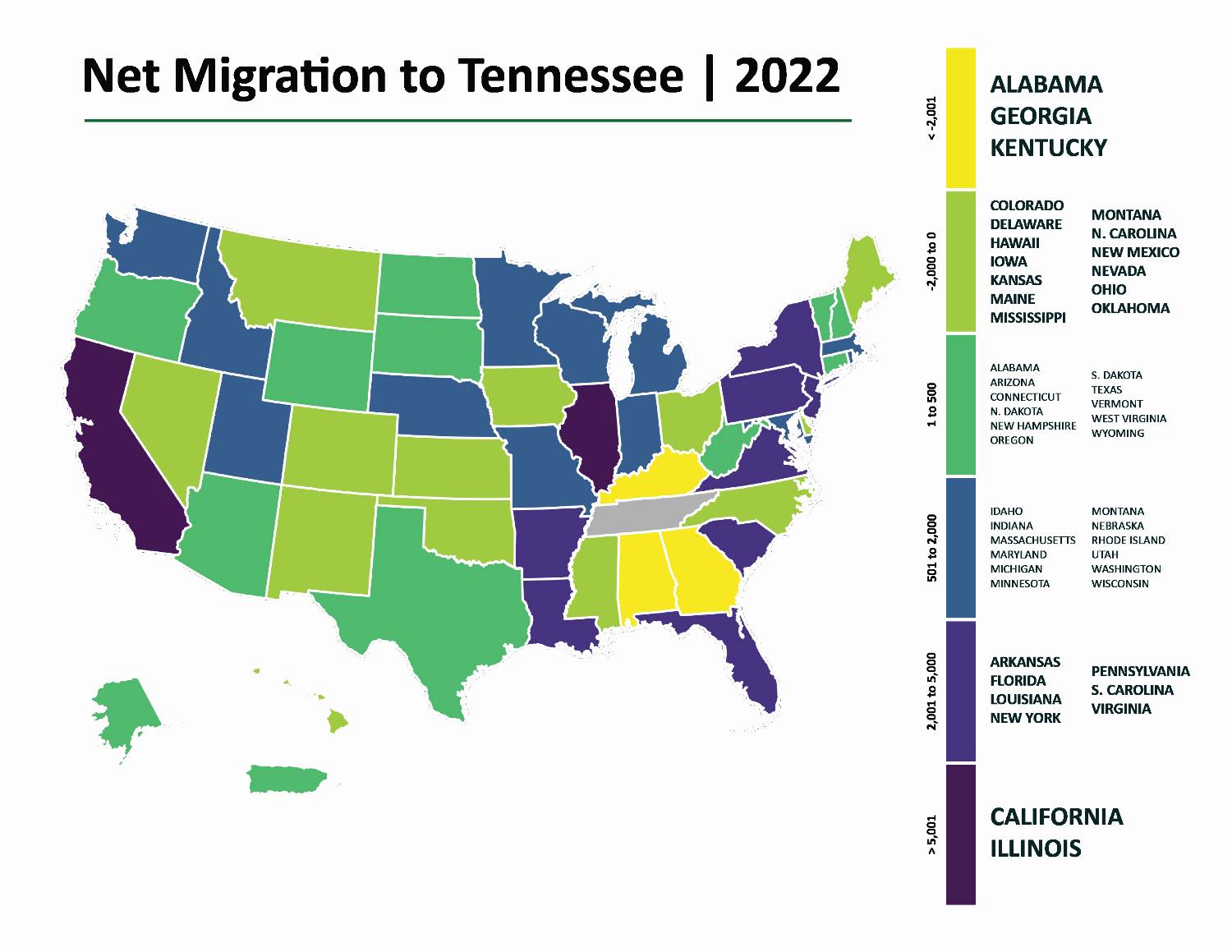Who's Moving to Tennessee?
In recent years, migration has been the main driver of population growth in Tennessee.
Individuals who moved to Tennessee from other states mostly came from California, Texas, and the southeastern U.S.

The largest contributors were Florida and California, sending 25,318 and 22,565 new residents respectively. The fewest moves came from northern states, with Maine, North Dakota, and Delaware contributing just over 200 people combined.

Population growth is specifically supported by net migration, or the difference between the number of people coming into an area and the number of people leaving that area. Some states saw a large number of residents leave to migrate to Tennessee only to simultaneously gain a large number of new residents from Tennessee, resulting in low net migration. The state with the greatest net migration to Tennessee was California with 17,067 residents moving to Tennessee. The next highest net migration was over 10,000 individuals fewer than California; Illinois with 5,182. Florida and Virginia followed with about 4,000 individuals each and New York rounded out the top five states at 3,657. Kentucky, Georgia, and Alabama were responsible for the greatest net loss, with about 4,000 more people moving from Tennessee to Kentucky or Georgia than vice versa.

Because the majority of population growth in Tennessee is from net migration, the state's population grew by almost 83,000 in 2022, despite the fact that there were more than 9,000 more deaths than births that year. This is part of a trend in reduced birth rates that has been observed since the 2010s following the Great Recession. Low birth rates coupled with Tennessee's desirability for businesses and retirees point to net migration continuing to fuel growth in the state for the foreseeable future.

